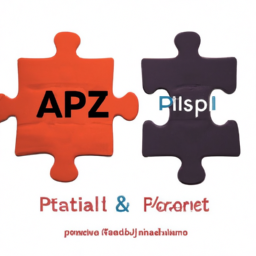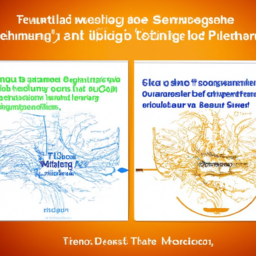What Is API Integration And How Do IT Services Support It?
Have you ever wondered what API integration is and how IT services contribute to it? API integration, also known as Application Programming Interface integration, is the process of connecting different software systems or applications to allow them to communicate and share data seamlessly. IT services play a crucial role in supporting API integration by providing the necessary technical expertise and resources to ensure a smooth and efficient integration process. In this article, we will explore the concept of API integration and delve into how IT services contribute to its success.
API Integration
Definition of API Integration
API integration refers to the process of connecting different software systems or applications through Application Programming Interfaces (APIs) to facilitate the exchange of data and functionalities. An API acts as an intermediary between two applications, allowing them to communicate and interact with each other seamlessly. With API integration, developers can leverage the capabilities of existing applications to enhance their own systems without reinventing the wheel.
Importance of API Integration
API integration plays a vital role in enabling different software systems to work together efficiently and effectively. It allows businesses to leverage the functionalities and data of different applications, enabling them to streamline processes, improve productivity, and provide enhanced services to their customers. By integrating APIs, organizations can expand their reach, integrate their workflows, and share data securely across various systems. This integration leads to increased efficiency, reduced manual effort, improved data accuracy, and ultimately, better business outcomes.
Types of API Integration
There are various types of API integration that organizations can employ based on their specific requirements and use cases.
1. Point-to-Point Integration
In point-to-point integration, APIs are connected directly between two systems or applications. It is a simple approach and suitable for integrating a limited number of applications. However, this method can become complex and challenging when there are multiple systems involved or when scalability is a concern.
2. Middleware Integration
Middleware integration involves using an integration platform or middleware layer to connect multiple applications through APIs. Middleware acts as a bridge between different systems, enabling seamless communication and data exchange. This approach simplifies the integration process, allows for scalability, and provides a centralized platform for managing and monitoring APIs.
3. Service-Oriented Architecture (SOA)
SOA involves designing applications as a collection of services that communicate with each other through APIs. It promotes loose coupling between services, enabling flexibility, reusability, and interoperability. SOA-based API integration allows organizations to break down monolithic systems into modular services, making it easier to manage and scale applications.
IT Services
Role of IT Services in API Integration
IT services play a crucial role in supporting API integration initiatives within organizations. Skilled IT professionals provide the expertise and technical know-how required to successfully implement and manage API integrations. They help organizations identify the most suitable integration strategy, design and develop APIs, manage the integration process, and ensure the smooth functioning of integrated systems.
IT services also contribute to the security, scalability, and performance aspects of API integration. They implement robust security measures to protect sensitive data and ensure compliance with industry regulations. IT professionals leverage their experience and knowledge to optimize API performance and scalability, ensuring that integrations can handle increasing data volumes and user loads.
Benefits of Using IT Services for API Integration
-
Expertise and Guidance: IT service providers bring in-depth knowledge and expertise in API integration. They guide organizations through the complexities of the integration process, helping them make informed decisions, avoid pitfalls, and achieve optimal results.
-
Efficiency and Productivity: By leveraging IT services for API integration, organizations can streamline their processes, automate data exchange, and eliminate manual effort. This leads to increased efficiency, improved productivity, and faster time-to-market for new functionalities.
-
Scalability and Flexibility: IT professionals ensure that API integrations are designed with scalability in mind. They plan and implement solutions that can handle future growth and evolving business requirements. Additionally, IT services enable organizations to easily adapt and modify integrations as needed, allowing for flexibility and agility.
-
Security and Compliance: IT service providers prioritize security in API integrations. They implement robust security measures, including authentication and encryption, to protect data from unauthorized access or breaches. IT professionals also ensure compliance with relevant regulations, helping organizations maintain data privacy and integrity.
-
Support and Maintenance: IT services provide ongoing support and maintenance for API integrations. They proactively monitor integrations, identify and resolve issues, and ensure optimal performance and availability. This allows organizations to focus on their core business activities while relying on IT experts for integration management.
API Integration Challenges
While API integration offers numerous benefits, it also presents specific challenges that organizations need to address for successful implementation.
Security and Authentication
Ensuring the security of API integrations is crucial to protect sensitive data from unauthorized access or malicious activities. Organizations must implement robust authentication mechanisms, such as API keys, access tokens, or OAuth, to verify the identity of API consumers. Additionally, encryption techniques, such as SSL/TLS, should be employed to secure data transmissions.
Data Mapping and Transformation
API integrations often involve different data formats and structures between systems. Organizations must address the challenge of mapping and transforming data from one format to another to ensure compatibility and smooth data exchange. This requires careful planning, data mapping strategies, and the use of data integration tools or middleware for seamless transformation.
Performance and Scalability
API integrations should be designed to handle increasing data volumes, user loads, and transaction volumes. To ensure optimal performance and scalability, organizations must employ efficient coding practices, caching mechanisms, and distributed architectures. Load testing and performance monitoring should also be conducted to identify bottlenecks and optimize performance.
Error Handling and Monitoring
API integrations can encounter errors due to various factors, such as connectivity issues, incorrect data formats, or system failures. Organizations need robust error handling mechanisms to ensure that errors are detected, logged, and appropriately handled. Real-time monitoring and logging capabilities are essential for identifying and resolving integration issues promptly.
API Integration Tools
To facilitate API integration, organizations can leverage various tools and platforms that provide dedicated features and functionalities.
API Management Platforms
API management platforms provide comprehensive solutions for designing, deploying, securing, and managing APIs. These platforms typically include features such as API documentation, developer portals, security policies, traffic management, analytics, and monitoring capabilities. Popular API management platforms include Apigee, MuleSoft, and IBM API Connect.
Integration Middleware
Integration middleware, also known as integration platforms, offers a centralized platform for connecting and managing APIs. These platforms provide a range of integration capabilities, including data transformation, routing, orchestration, and real-time monitoring. Middleware solutions, such as Dell Boomi, MuleSoft’s Anypoint Platform, and IBM Integration Bus, simplify the integration process and enhance the scalability and flexibility of API integrations.
Data Integration Tools
Data integration tools are specifically designed to facilitate the exchange of data between different applications or systems. These tools offer features such as data mapping, transformation, synchronization, and replication. Some popular data integration tools include Informatica PowerCenter, Talend, and Microsoft SQL Server Integration Services (SSIS).
IT Service Providers
IT service providers offer a range of services to support organizations in their API integration efforts.
API Integration Services
IT service providers offer API integration services, including end-to-end API integration planning, design, development, and implementation. They work closely with organizations to understand their integration needs, develop robust APIs, and ensure seamless integration across systems. These services involve API strategy development, API testing, and the establishment of integration best practices.
API Consulting and Strategy
IT service providers offer consulting services to help organizations define their API integration strategies. They assist in identifying the most suitable integration approach, selecting appropriate technologies, and designing an architecture that aligns with business goals. API consultants provide expert guidance on API design principles, security considerations, scalability, and performance optimization.
API Development and Testing
IT services encompass API development and testing, ensuring that APIs are well-architected, secure, and performant. IT professionals work closely with organizations to develop APIs that align with their specific requirements and implement best practices. Thorough testing is conducted to validate the functionality, reliability, and security of APIs, thereby minimizing the risk of integration failures.
API Maintenance and Support
IT service providers offer ongoing maintenance and support services for APIs and integrated systems. This includes monitoring integrations, identifying and resolving issues, applying updates and patches, and performing regular health checks. By providing comprehensive support, IT service providers ensure the continuous availability, reliability, and performance of API integrations.
Case Studies
To understand the real-world impact of API integration with IT services, let’s explore a few case studies.
Successful API Integration with IT Services
ABC Corporation, a multinational logistics company, sought to streamline its order management process by integrating its e-commerce platform with their internal warehouse management system (WMS). The company engaged an IT service provider specialized in API integration to design and implement a secure and efficient integration solution. The IT service provider developed APIs that enabled seamless data exchange between the e-commerce platform and WMS, automating order fulfillment and inventory management. This integration reduced manual effort, improved order accuracy, and enhanced customer satisfaction.
Real-life Examples of API Integration
-
Uber: Uber integrates with various mapping and payment APIs to provide a seamless ride-hailing experience. Through API integration, Uber can access real-time map data, calculate fares, process payments securely, and provide a smooth user experience.
-
Salesforce: Salesforce, a leading customer relationship management (CRM) platform, offers a wide range of APIs for integration with third-party applications. These APIs enable organizations to connect their CRM data with other systems, such as marketing automation tools or accounting software, streamlining sales and marketing processes.
Business Impact of API Integration
API integration offers significant business benefits, driving growth, innovation, and operational efficiency. By integrating APIs, organizations can accelerate time-to-market for new products and services, enhance customer experiences, and improve internal processes. API integrations enable businesses to leverage the functionalities of external applications, integrate workflows, and share data securely, leading to improved productivity, cost savings, and competitive advantages.
Best Practices
To ensure successful API integration, organizations should follow these best practices:
Thorough Planning and Documentation
Invest time and effort into planning the integration, including defining requirements, identifying integration points, and understanding data transformation needs. Documenting integration processes, data mappings, and error handling procedures ensures clarity and facilitates future maintenance and enhancements.
Standardized APIs
Follow industry-standard API design principles, such as using RESTful or SOAP architectures. Design APIs that are easy to understand, with clear naming conventions, and consistent request and response structures. Standardization promotes reusability, simplifies integration, and enhances interoperability between systems.
API Versioning and Lifecycle Management
Implement versioning for APIs to ensure backward compatibility and avoid disruptions when making changes. Establish proper API lifecycle management practices, including version control, deprecation policies, and release notes. This enables organizations to introduce new features, fix issues, and retire outdated APIs without impacting existing integrations.
Testing and Monitoring
Perform comprehensive testing to validate the functionality, security, and performance of APIs. Use automated testing tools to simulate various scenarios, including error conditions and high traffic volumes. Implement real-time monitoring to proactively identify integration issues, measure performance metrics, and ensure optimal API health.
Continuous Improvement and Optimization
Regularly assess the performance and effectiveness of API integrations. Collect feedback from users, monitor key performance indicators, and identify areas for optimization. Continuously refine and improve integrations, leveraging new technologies or features to enhance efficiency, scalability, and security.
Future Trends
To stay ahead in the ever-evolving landscape of API integration, organizations should keep an eye on these future trends:
APIs in Internet of Things (IoT)
As IoT continues to grow, APIs will play a pivotal role in connecting and orchestrating devices, sensors, and platforms. APIs will enable seamless communication and data exchange between IoT devices, enabling organizations to leverage IoT data for enhanced decision-making, automation, and personalized experiences.
Microservices Architecture
Microservices architecture promotes the development of small, decoupled services that can be independently deployed and scaled. APIs facilitate communication and interaction between these microservices, enabling organizations to create flexible, modular, and scalable architectures. Microservices-based API integration allows businesses to deliver functionalities faster, adapt to changing requirements, and improve system resilience.
Artificial Intelligence and Machine Learning Integration
API integration with artificial intelligence (AI) and machine learning (ML) technologies unlocks new possibilities in areas such as natural language processing, image recognition, and predictive analytics. APIs that provide access to AI and ML algorithms allow organizations to leverage these technologies without having to develop them from scratch, enabling faster innovation and increasing efficiency across various domains.
Conclusion
API integration is an essential aspect of modern software development and digital transformation. By connecting applications and systems through APIs, organizations can unlock the full potential of their data and functionalities, streamline processes, and provide enhanced services. IT services and the use of dedicated tools support API integration by providing expertise, scalability, security, and ongoing maintenance and support. By following best practices, organizations can overcome integration challenges and ensure the success of API integration initiatives. Looking ahead, embracing emerging trends such as IoT, microservices, and AI integration will help organizations stay agile, competitive, and at the forefront of technological advancements.








